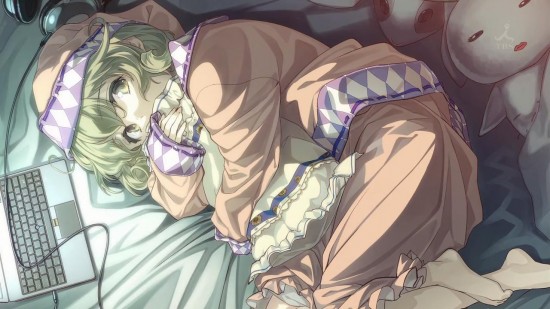 Sasami-san@Ganbaranai (“Sasami @ Unmotivated”) (Anime Network) is the latest show from director Akiyuki Shinbo, whose previous works I have considered brilliant but often unwatchable. The new show is strange, disturbing and surreal. Either it is about a disturbed girl with delusions influenced by Shinto mythology, or it is a Shinto religious allegory that uses a disturbed girl as a metaphor. Or who knows, maybe it’s both.
Sasami-san@Ganbaranai (“Sasami @ Unmotivated”) (Anime Network) is the latest show from director Akiyuki Shinbo, whose previous works I have considered brilliant but often unwatchable. The new show is strange, disturbing and surreal. Either it is about a disturbed girl with delusions influenced by Shinto mythology, or it is a Shinto religious allegory that uses a disturbed girl as a metaphor. Or who knows, maybe it’s both.
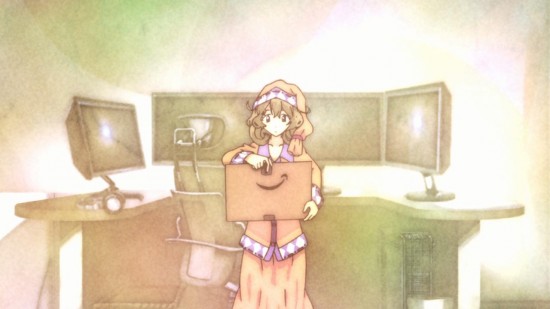
The main character is Sasami Tsukuyomi, a high school student who is a hikikomori (shut-in.) She has panic attacks whenever she goes outside and sees the sun. So she stays home and plays around on the Internet.
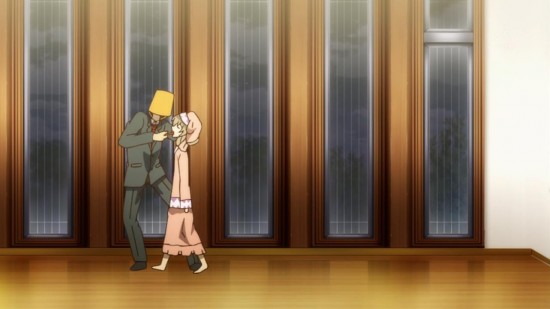
Sasami lives with her older brother Kamiomi, a creepy pervert who is always fawning over her. When he gets too close she has to beat him up. His face is never visible; he always has a bucket over his head or is holding up something to hide it.

Kamiomi teaches at the high school that Sasami attends when she can manage to leave the house. When he leaves the house she monitors him on the Internet. When she feels frustratred strange, surreal things happen, such as the whole world turning into chocolate.
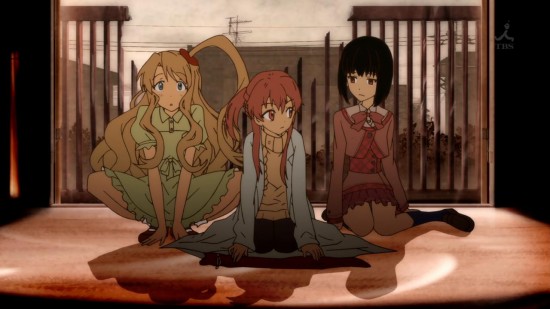
Things are usually set right by the three Yagami sisters.

Tsurugi Yagami also teaches at Sasami’s high school. She is brash and arrogant and sexually brazen.
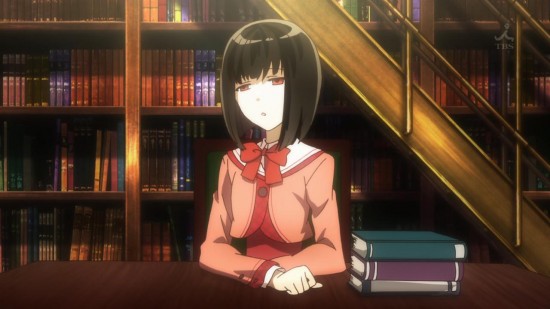
Kagami Yagami is Sasami’s classmate. She is a sleepy girl who is also a powerful combat robot.
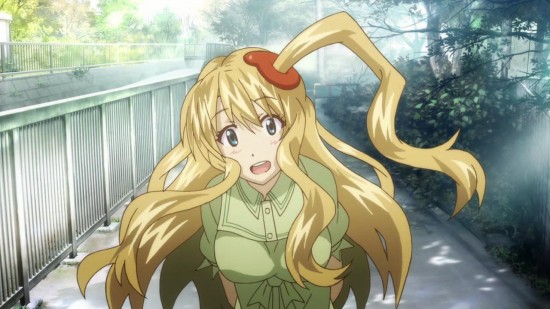
Tama Yagami is a little girl in elementary school, though she looks much older. She is very sweet and innocent.
All this is according to Sasami, who seems a very unreliable narrator.
At the beginning of the second episode Sasami gives us an “explanation.” She starts with a brief summary of Shinto theology, then explains that she has the power of Anaterasu the Sun Goddess, patron of the Japanese nation and ancestor of the Imperial family. Her brother can sometimes use this power which is why weird things sometimes happen. She later decides that the Yagami sisters are also avatars of Amaterasu, who may have been created by Sasami for her own protection.
All of this seems to be inspired by one of the best-known Shinto myths about Amaterasu. Amaterasu was harassed by her brother Susanoo and became so angry that she hid herself in a cave, thus plunging the world into darkness. (In other words, she became a hikikomori.) Ame-no-Uzume the Goddess of Dawn lured her out by hanging a jewel and a mirror outside of the cave. As a token of apology Susanoo gave Amaterasu the magic sword Kusanagi no Tsurugi. Later Amaterasu gave these three items to the Japanese Imperial family as symbols of their divine authority.
My instinctive reaction is that all the Shinto stuff is a delusion that Sasami has taken refuge in to hide from a reality that she can’t deal with. Probably she is being sexually abused by her brother. Or maybe he is innocent–there are hints that he actually rescued her from some horrible traumatic situation. Or the fact that his face is always hidden may mean that he really is dead.
On the other hand the character’s names suggest that this is really an allegory.
“Tsukuyomi” is the name of the Shinto Moon God. (Not the Sun Goddess however.) “Sasami” is written as “Beauty in Chains.” “Kamiomi” means “God’s Attendant.”
“Yagami” means “Evil God.” The names of the 3 sisters: Tsurugi (sword), Kagami (mirror) and Tama (ball/jewel/spirit) refer to the Japanese Imperial Regalia.
(I think we can safely assume that the Japanese civil officials would not accept either “Tsukuyomi” or “Yagami” as names on a family register.)
The main question about a series like this is whether it will actually give us a good story, or whether it has nothing beyond a bizarre premise. I will be disappointed if this series ends after giving us nothing but a lot of weird imagery and surreal set-pieces. To be worthwhile it should actually have something to say.

